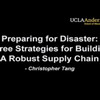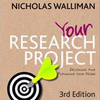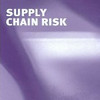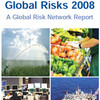 Sustainability has become a huge buzzword, both in today’s business world and within the broader facets of society. So say Craig R Carter and P Liane Easton in their 2011 article Sustainable supply chain management: evolution and future directions. Here they conduct a systematic review of the sustainable supply chain management (SSCM) literature in the principal logistics and supply chain management journals, across a 20-year time frame. They discover that SSCM has evolved from a perspective and investigation of standalone research in social and environmental areas, through a corporate social responsibility perspective, and towards a convergence of perspectives of sustainability as the triple bottom line. What I found interesting is how supply chain risk management and contingency planning links up with sustainable supply chains.
Sustainability has become a huge buzzword, both in today’s business world and within the broader facets of society. So say Craig R Carter and P Liane Easton in their 2011 article Sustainable supply chain management: evolution and future directions. Here they conduct a systematic review of the sustainable supply chain management (SSCM) literature in the principal logistics and supply chain management journals, across a 20-year time frame. They discover that SSCM has evolved from a perspective and investigation of standalone research in social and environmental areas, through a corporate social responsibility perspective, and towards a convergence of perspectives of sustainability as the triple bottom line. What I found interesting is how supply chain risk management and contingency planning links up with sustainable supply chains.
Sustainability
The issue of sustainability is indeed a huge buzzword and is the coming value chain trend for 2020. It has even crept into this blog, since sustainability and supply chain risk and dsiruptions go hand in hand. More sustainability is less vulnerability was my first post on this issue, followed by fragility and sustainability as emerging research areas, and more recently, Maersk using slow shipping for more reliability. With the same people involved, today’s article picks up on my first post and looks back, while taking it further and into the future.
Four facilitators
Based on Carter’s earlier work the article begins with the four facilitators of sustainable supply chain management:
Strategy – holistically and purposefully identifying individual SSCM initiatives which align with and support the organizations’ overall sustainability
Risk Management – including contingency planning for both the upstream and downstream supply chain
Organizational Culture – which is deeply engrained and encompasses organizational citizenship, and which includes high ethical standards and expectations
Transparency – in terms of proactively engaging and communicating with key stakeholders and having traceability and visibility in supply chain operations
These facilitators make up the four corners of sustainability, and sustainability comes from the intersection of economic performance, environmental performance and social performance.

These three are the triple bottom line, and it is only where all three meet and none excludes or exceeds the other that sustainability is achieved. Interestingly, agility appears next to risk, flexibility doesn’t.
Sustainability defined
What is sustainability? Again, citing Carter’s earlier work,
Sustainability is the strategic, transparent integration and achievement of an organization’s social, environmental and economic goals in the systemic coordination of key interorganizational business processes for improving the long-term economic performance of the individual company and its supply chains.
Is this a good definition? While I agree that social, environmental and economic goals must work together, is the long-term economic performance the ultimate goal? Why not the long-term social performance? Or why not the long-term overall performance (social, economic and environmental)?
Literature review
What I must commend the authors on, is their extensive literature review. Some 120 articles were reviewed and analyzed according to
- Subject of research
- e.g. environment, human rights, corporate social responsibility
- Industry
- e.g. automotive, consumer products, transportation, food and beverage
- Theoretical lens(es)
- e.g. transaction cost, resource-based, stakeholder theory
- Validity
- dressed or not addressed
- Social desirability bias
- addressed or not addressed
- Unit of analysis
- e.g. firm, function, supply chain
- Methodology
- e.g. survey, case study, theory building
One point the authors make is that many of the earlier articles rarely address issues of validity and bias, and more often than not use descriptive rather than empirical data, indicating perhaps that the buzz was more important than the beef, initially. That said, sustainability has gone from trend to theory and is now established as a well-acknowledged field of research, and few if any companies will be able to do business in the 21st century – and do it well – without addressing sustainability.
Conclusion
For anyone studying or researching sustainable supply chain, this article is a must. Not only does it capture what has been done so far, it also points at the shortcomings of some the research that has been done, and moreover, the article points at perhaps neglected and viable points of view that could lead to fruitful and innovative future research in supply chain management, as Michael E. Smith and Lee Buddress are asking for.
Reference
Carter, C., & Easton, P. (2011). Sustainable supply chain management: evolution and future directions International Journal of Physical Distribution & Logistics Management, 41 (1), 46-62 DOI: 10.1108/09600031111101420
Author links
- researchgate.net: Craig R Carter
- scopus.com: P Liane Easton
Related
- husdal.com: Value chain trends and strategies for 2020
- husdal.com: More sustainable and less vulnerable?












